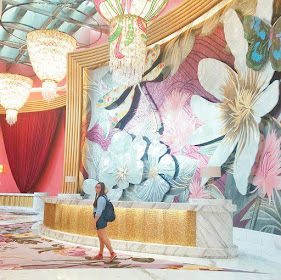Jayson and Juanito proudly showcase a selection of produce at the SM City Clark’s Weekend Market.
While modern agricultural techniques boost yields for some, there remains several Filipino farmers who struggle to keep pace. These experienced hands find themselves falling behind in a market demanding higher production, clinging to familiar yet often inefficient methods passed down through generations.
One farmer from Pampanga, Jayson Garcia, sought to disrupt this prevailing narrative in his family. He knew that he had to chart a new course forward for his farm and innovate to remain competitive within the rapidly evolving landscape of modern agriculture.
“Noon, mahirap ang magtanim,” he recalled their life before joining SM Foundation’s Kabalikat sa Kabuhayan. “Para bang tsambahan, basta pag itinanim mo ‘yan, hintayin mo na lang mamunga. Mas mahirap pa lalo kapag nagkaroon ng kalamidad,” he added.
SM Foundation’s training program focused on high-value crop cultivation was the breakthrough Garcia needed to revitalize his farming techniques. These included selecting the best seeds and caring for them as well as strategic planting schedules.
Jayson attends the SM City Clark’s Weekend Market to observe best practices and gain insights into new agricultural techniques.
The livelihood program also gave way for him to discover alternative sales channels that enhanced his earning potential while extending fair prices to his customers. The knowledge and confidence he gained led him to expand his farm, and in effect, increased his monthly income to more than Php25,000.
Aside from directly selling his harvests, he is now planting a variety of vegetables–on his farm, including lemongrass, malunggay, and madre de cacao, which he sells online to small businesses that process the produce into other products.
Embracing new techniques
Sharing the same story of hope is another KSK farmer from Pampanga, Juanito Dela Cruz. Despite his age, he actively pursued and adopted modern farming techniques. Building on his current success, he shared the importance of adaptability for farmers, calling for others to try and explore new practices.
From a modest monthly income of Php10,000, Juanito experienced an upsurge in his earnings, notably through participation in the Weekend Market at SM City Clark, yielding around Php30,000 weekly. “Kailangan maging bukas tayo sa makabagong pamamaraan ng pagsasaka para makahabol tayo sa demands ng panahon ngayon—ito ang itinuo sa akin ng SM Foundation-KSK,” he said.
Juanito, alongside his wife, actively participates in the SM City Clark Weekend Market. They credit the market with contributing to their increased profitability.
The SM Group’s KSK program has changed the lives of roughly 30,000 Filipino farmers, including Jayson and Juanito. Through its initiatives, farmers who once lost hope have been able to embrace modern farming techniques, leading to adaptability in the face of the evolving agricultural landscape.
The SM Group, through SM Foundation, remains steadfast in its commitment to spreading social good. This dedication extends to SM’s forthcoming endeavors to be led by its future smart city property development – with focus on enhancing positive social impact in the communities where SM operates.






